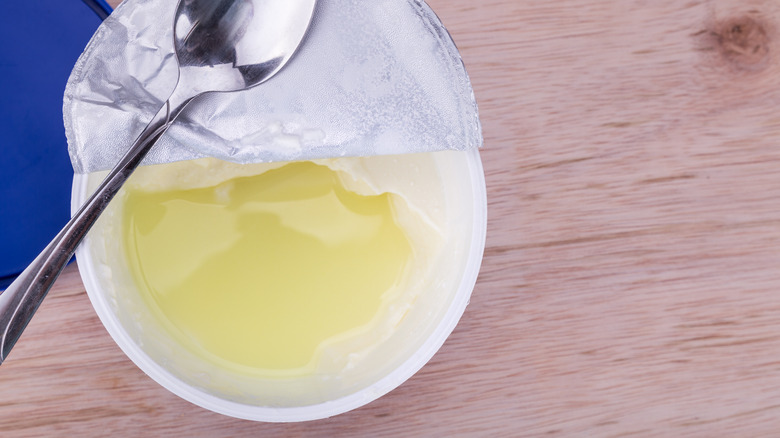The Scientific Reason For That First Watery Glug Of Ketchup
Whether it be an old packet of ketchup or a brand new bottle of Heinz, that first squeeze tends to be the least appealing one. You'll end up seeing a slightly rusty liquid sputter or even projectile across your plate, leaving spots and puddles. But what is the cause for this faulty first squeeze of ketchup? In fact, it seems that the same mechanism is responsible for a watery residue in mustard.
Of course, to remedy this, anyone can shake up the bottle or massage the plastic packet to get the liquids incorporated into the sauce again. New York Times even offers multiple solutions and tricks, like tipping the bottle at a certain angle, to properly serve ketchup and avoid that first sodden pour. But these methods don't answer the scientist's ever-burning question: Why does liquid pool towards the top of the lid or near the edges of a ketchup packet?
Syneresis
Syneresis is the technical term used to describe the process of liquid splitting from solid components of food or gel. Food Write notes that this process begins when the polymers in the gel bind to each other. As these gels contract towards one another, their ability to hold onto excess liquid decreases, and water is left behind. Thus, ketchup, which contains weak gelatinizing agents such as pectin and xanthan gum, is highly susceptible to this scientific process (via Cook's Illustrated).
Condiments such as ketchup and mustard certainly go through syneresis, but so does everything else that lets go of excess liquid. The most common foods in which you see syneresis at play are Greek yogurt, peanut butter, jams, and even meats. Depending on the gelling ingredient, syneresis can be quicker or slower to occur; Starch, for example, is a gelling agent that slows down this process, making a mixture thicker and more stabilized (via Food Write). But there is no need to add starch to your ketchup bottle. In all honesty, starch will probably do more harm than good by altering the strength of the flavor and thickening it into a paste. For products like ketchup and Greek yogurt, shaking and stirring will do the job to reverse the effects of syneresis.

